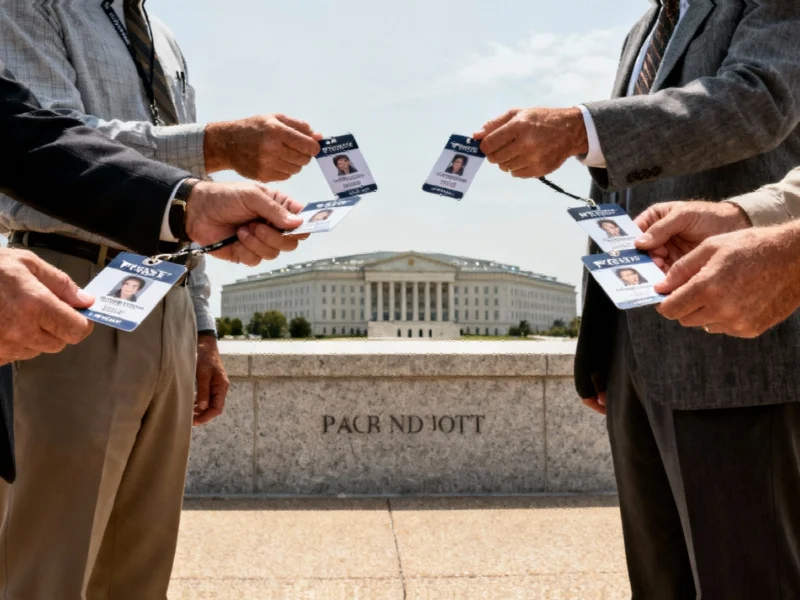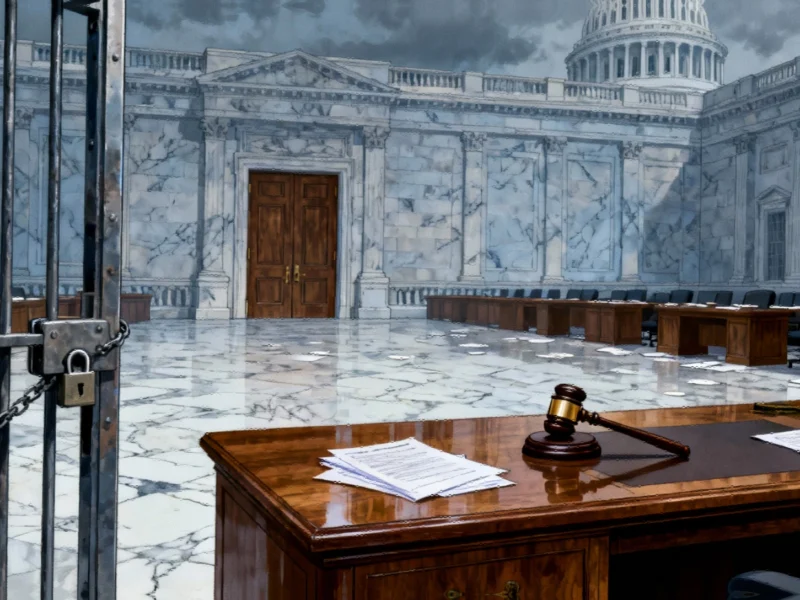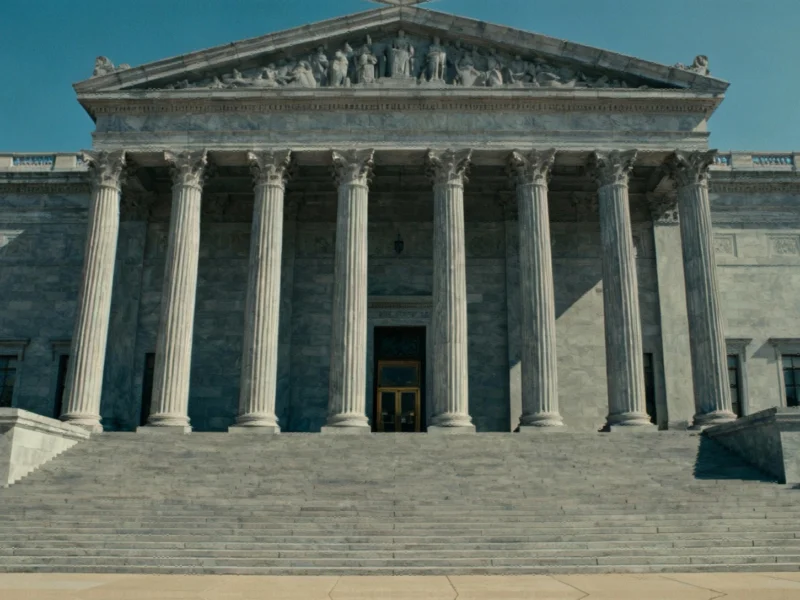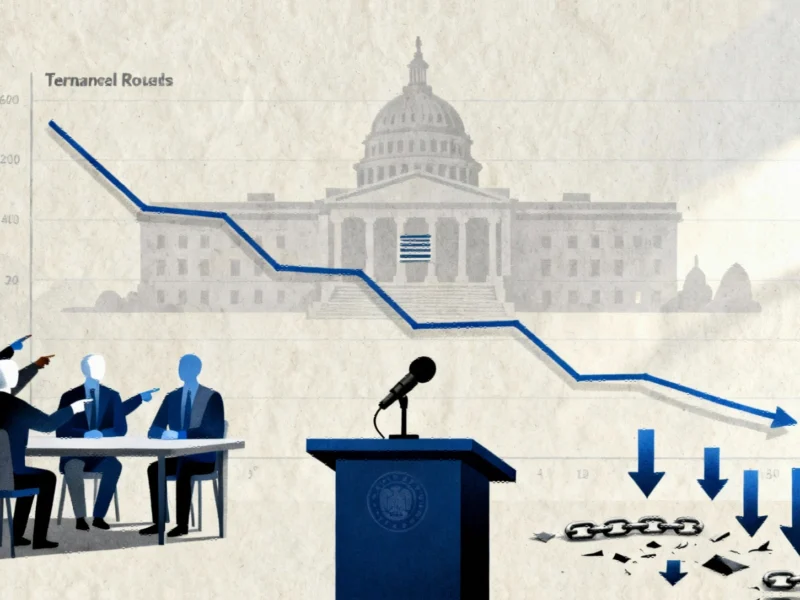In an unprecedented showdown between the U.S. military establishment and the press corps, Wednesday witnessed dozens of journalists voluntarily surrendering their Pentagon credentials rather than comply with newly implemented press regulations that dramatically restrict media access and threaten punitive measures for routine information requests. The mass credential return represents one of the most significant confrontations between defense officials and journalists in recent memory, with implications for military transparency and public accountability.
The controversial guidelines, championed by Defense Secretary Pete Hegseth, have created unusual alliances across the media spectrum, with organizations as ideologically diverse as The New York Times, NBC News, and Fox News collectively rejecting the terms. This broad-based opposition underscores the fundamental concerns about press freedom that transcend traditional political divisions, while highlighting how these restrictions could impact coverage of critical defense matters including defense supply chain cybersecurity mandates and other national security issues.
Unprecedented Restrictions and Enforcement Mechanisms
The new framework represents a radical departure from previous Pentagon media guidelines, both in its extensive length and comprehensive scope. Among the most contentious provisions is the explicit threat of credential revocation for journalists who merely request information on matters of legitimate public interest. This punitive approach marks a significant escalation in the Pentagon’s relationship with the press corps, potentially creating a chilling effect on investigative reporting about military operations, procurement processes, and technological initiatives such as cutting-edge networking technologies used in defense applications.
Legal representatives from major news organizations have engaged in weeks of tense negotiations with Pentagon officials, attempting to moderate what they characterize as overly restrictive measures. These discussions have occurred against the backdrop of increasing concerns about how such limitations might affect the public’s understanding of defense spending, military readiness, and the implementation of security protocols including network microsegmentation for insurance and risk reduction in defense infrastructure.
Media Landscape Divided Over Compliance
The media response has been overwhelmingly oppositional, with only One America News, the conservative cable network, publicly acknowledging acceptance of the new terms. This near-universal rejection among mainstream and specialized military publications signals a potentially protracted conflict between the defense establishment and the journalists who cover it.
Specialized publications focusing exclusively on military affairs face particularly difficult calculations, as their reporting depends heavily on continued access to Pentagon sources and facilities. Their participation in the credential surrender suggests the new rules impose constraints that even niche publications covering defense technology and procurement find unacceptable for maintaining journalistic integrity.
Broader Implications for Defense Coverage and Public Knowledge
The implementation of these restrictive guidelines comes at a critical juncture for defense reporting, with numerous complex technological and strategic developments requiring thorough public examination. The restrictions could significantly impact how journalists cover emerging defense technologies, cybersecurity initiatives, and the military’s adaptation to new battlefield realities.
Industry observers note that the Pentagon’s approach may inadvertently hamper its own objectives by limiting informed public discussion about defense innovations and security measures. Without robust media oversight, the development and implementation of critical defense systems—from supply chain security to advanced networking solutions—may proceed with reduced public scrutiny and accountability.
As the standoff continues, the fundamental question remains whether the Pentagon and press corps can establish a new equilibrium that preserves both operational security and the public’s right to information about one of the government’s most consequential functions.
Based on reporting by {‘uri’: ‘nytimes.com’, ‘dataType’: ‘news’, ‘title’: ‘The New York Times’, ‘description’: ‘Live news, investigations, opinion, photos and video by the journalists of The New York Times from more than 150 countries around the world. Subscribe for coverage of U.S. and international news, politics, business, technology, science, health, arts, sports and more.’, ‘location’: {‘type’: ‘place’, ‘geoNamesId’: ‘5128581’, ‘label’: {‘eng’: ‘New York City’}, ‘population’: 8175133, ‘lat’: 40.71427, ‘long’: -74.00597, ‘country’: {‘type’: ‘country’, ‘geoNamesId’: ‘6252001’, ‘label’: {‘eng’: ‘United States’}, ‘population’: 310232863, ‘lat’: 39.76, ‘long’: -98.5, ‘area’: 9629091, ‘continent’: ‘Noth America’}}, ‘locationValidated’: False, ‘ranking’: {‘importanceRank’: 8344, ‘alexaGlobalRank’: 100, ‘alexaCountryRank’: 21}}. This article aggregates information from publicly available sources. All trademarks and copyrights belong to their respective owners.



